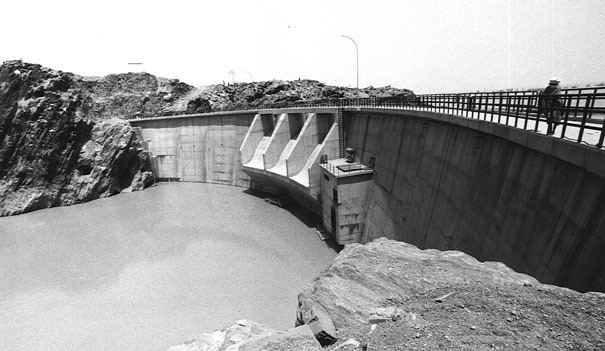 | ||
The Gorgol River is a river of southern Mauritania that is a tributary of the Sénégal River. The river is formed by the confluence of the Gorgol Noir (194 km in length), with the Gorgol Blanc (345 km in length). The Gorgol joins the Sénégal River at Kaédi.
The river basin plays an important in role in Mauritanian economy facilated by investment in the 1970s. The Mauritanian government initiated an irrigation and development scheme in 1975 for the Gorgol River valley where the Foum Gleita Dam across the Gorgol would increase arable land by over 3,600 ha (9,000 acres). This project was to be followed by other dams that together would add 30,000 ha (74,100 acres) for food production.
The Gorgol river was a source of concern amongst environmentalists from the mid-1970s with new water damming projects on the river. In 1976, Schistosomiasis, also known as snail fever, a parasitic disease caused by several species of fluke of the genus Schistosoma was believed to be increasing along the river valley resulting from disastrous Sahelian drought. A report conducted between May and November 1974, revealed the prevalence and intensity of schistosomiasis, and the relevant species of snails. Particularly affected was the Mbout area nearest the Foum Gleita Dam. Rates of schistisomiasis were lowest in Kaédi near the confluence of the Gorgol and Senegal rivers.
